The establishment of Global Standard Stratotype-section and Point (GSSP), i.e. the ‘Golden Spike’, forms the cornerstone of Phanerozoic subdivision and correlation of global chronostratigraphy, and compose common scientific language for exploring Earth history and life evolution, which has great scientific significance for the Stratigraphy and Palaeontology.
The GSSP for the base of the Carboniferous System was accepted and ratified by IUGS in February 1990, and is defined by the first appearance of the conodont Siphonodella sulcata at La Serre near Cabrie`res, southern France. Two auxiliary stratotype sections, including the Hasselbachtal section in Germany and the Nanbiancun section in South China, were established to better constrain the Devonian-Carboniferous boundary (DCB) around the world.
Nevertheless, since the proposal of the GSSP, the choice of La Serre has received criticism due to unfavourable lithofacies and lack of a “true” phylogenetic transition from Si. praesulcata to Si. sulcata. Meanwhile, there are many difficulties in distinguishing the index conodont Si. sulcata from its ancestor, Si. praesulcata, owing to the existence of abundant transitional forms and morphotypes. As a result, the ICS established a task group to redefine the DCB GSSP. In 2016 Montpellier DCB workshop, a new criterion “base of the Protognathodus kockeli Zone, beginning of radiation and top of major regression (top of the Hangenberg Sandstone event) and end of mass extinction” has been proposed by the task group, which need to be tested for global correlation.
Drs. Markus Aretz and Corradini, the chair and vice-chair of the GSSP redefinition work group, organized a special issue (entitled as the “Global review of the Devonian-Carboniferous Boundary”) recently in Palaeobiodiversity and Palaeoenvironments, aiming to provide newest overviews of DCB intervals in important regions (e.g. western Europe, North America and South China etc.), and check the suitability of the proposed boundary level all over the world.
In this new paper, we not only briefly review the research history, current status and achievement of DCB in China, but also illustrate representative DCB sections in South China, western Junggar and Tibet. Furthermore, we test the “Montpellier criterion” for the Devonian-Carboniferous boundary redefinition.
In South China, there exist numerous well-preserved and continuous Devonian-Carboniferous boundary successions that were formed in low-latitude passive margin basin, and this presents a unique opportunity to decipher the strata along a proximal to basinal transect using integrated biostratigraphical, event-stratigraphical, and geochemical approaches.
Our geochemical data (δ13Ccarb, δ15Nbulk, δ238U and Mo/U enrichments, I/Ca ratio) indicated local and global C-N cycling perturbations and marine anoxia in the main phase of the Hangenberg Crisis interval (Middle Siphonodella praesulcata Zone), which coincided with a major regression in South China. Stromatoporoid biostromes and most typical Devonian faunas did not survive into the interval, and the deep-water black shales yield only opportunistic survivors, such as ammonoid Postclymenia cf. evoluta and bivalve Guerichina, along with miospores belonging to the LN Zone. The upper Hangenberg Crisis interval (Upper Si. praesulcata Zone, equal to the Protognathodus kockeli Zone) is marked by initial post-glacial transgression, a global δ13Ccarb spike, and opportunistic faunal blooms, coincident with conodont biofacies shift to the polygnathid-protognathodid biofacies. The Protognathodus fauna, nearly absent from platform facies, is often found in the condensed upper crisis interval of the basin, slope, and platform margin facies within the Youjiang Basin, although the abundance is extremely low and the phylogenetic lineage of Pr. meischneri-Pr. collinsoni-Pr. kockeli cannot be recognized in most successions. In South China, the first occurrence of Pr. kockeli seems to correspond to lithofacies changes, recorded in the first level of transgression just above the Hangenberg Sandstone event.
Multiple lines of evidence, including great spatial heterogeneity of δ13Ccarb and δ15Nbulk records, extremes of redox proxies, and lack of macrofossils, suggest that marine habitats remained in a critical/turbulent state during the Upper Si. praesulcata Zone, triggering the opportunistic blooms and minor extinctions.
Reference:
For detailed information about this paper, please check: Qie, W., Sun, Y., Guo, W., Nie, T., Chen, B., Song, J., Liang, K., Yin, B., Han, S., Chang, J., Wang, X., 2021. Devonian-Carboniferous boundary in China. Palaeobiodiversity and Palaeoenvironments 101, 589-611. https://doi.org/10.1007/s12549-021-00494-z (Note: Springer offers free access till of 18th of August, 2021)
For detailed information about the updated DCB special issue, please check: Aretz M., Corradini C., 2021. Global review of the Devonian-Carboniferous Boundary. Palaeobiodiversity and Palaeoenvironments, 101 (2).
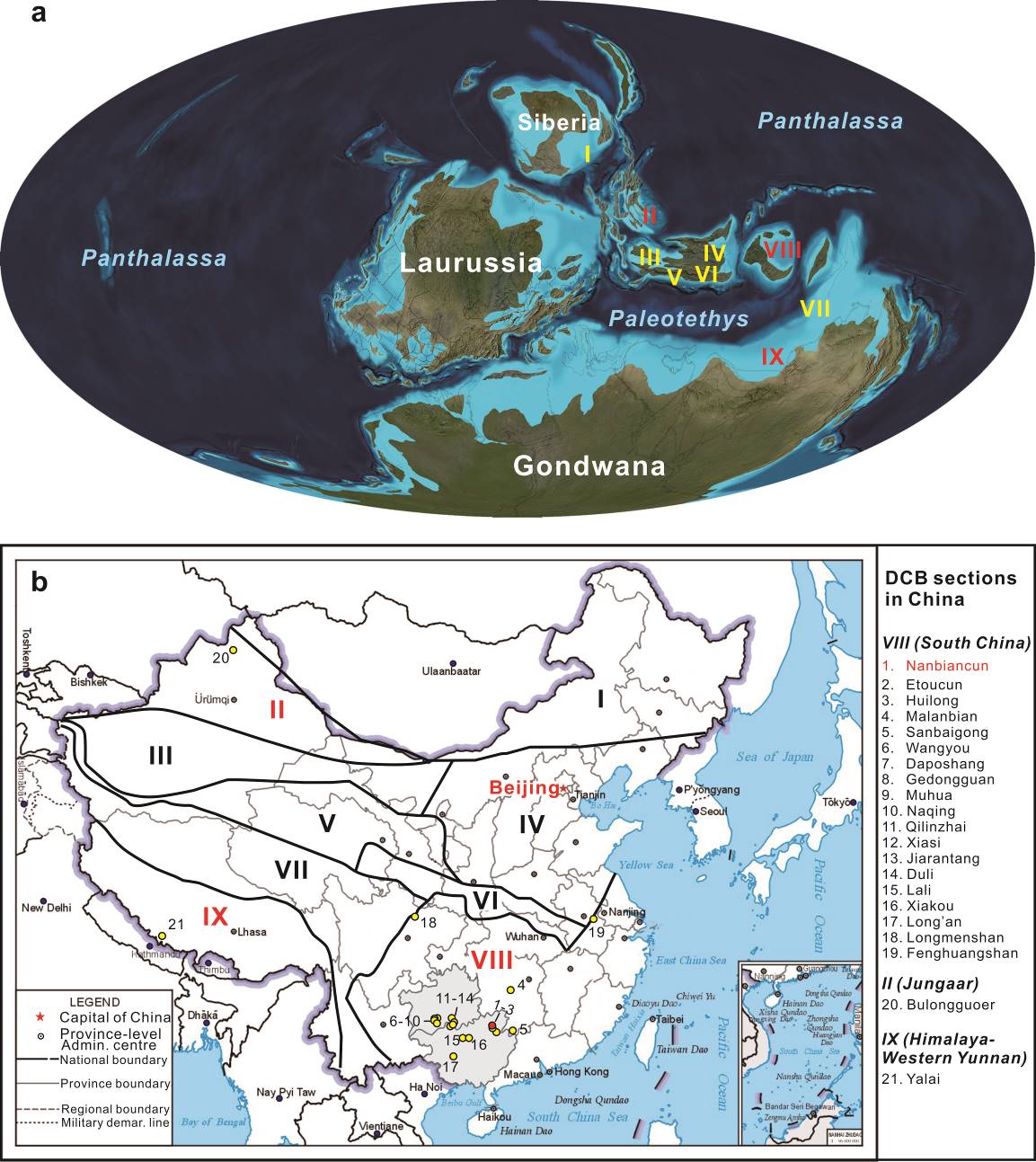
Figure 1. A) Palaeogeography locations of Chinese plates during the Late Devonian, paleogeographic maps are from Ron Blakey (www2.nau.edu/rcb7) and B) Tectonic-stratigraphic regions of the Devonian and well-known Devonian-Carboniferous boundary sections in China
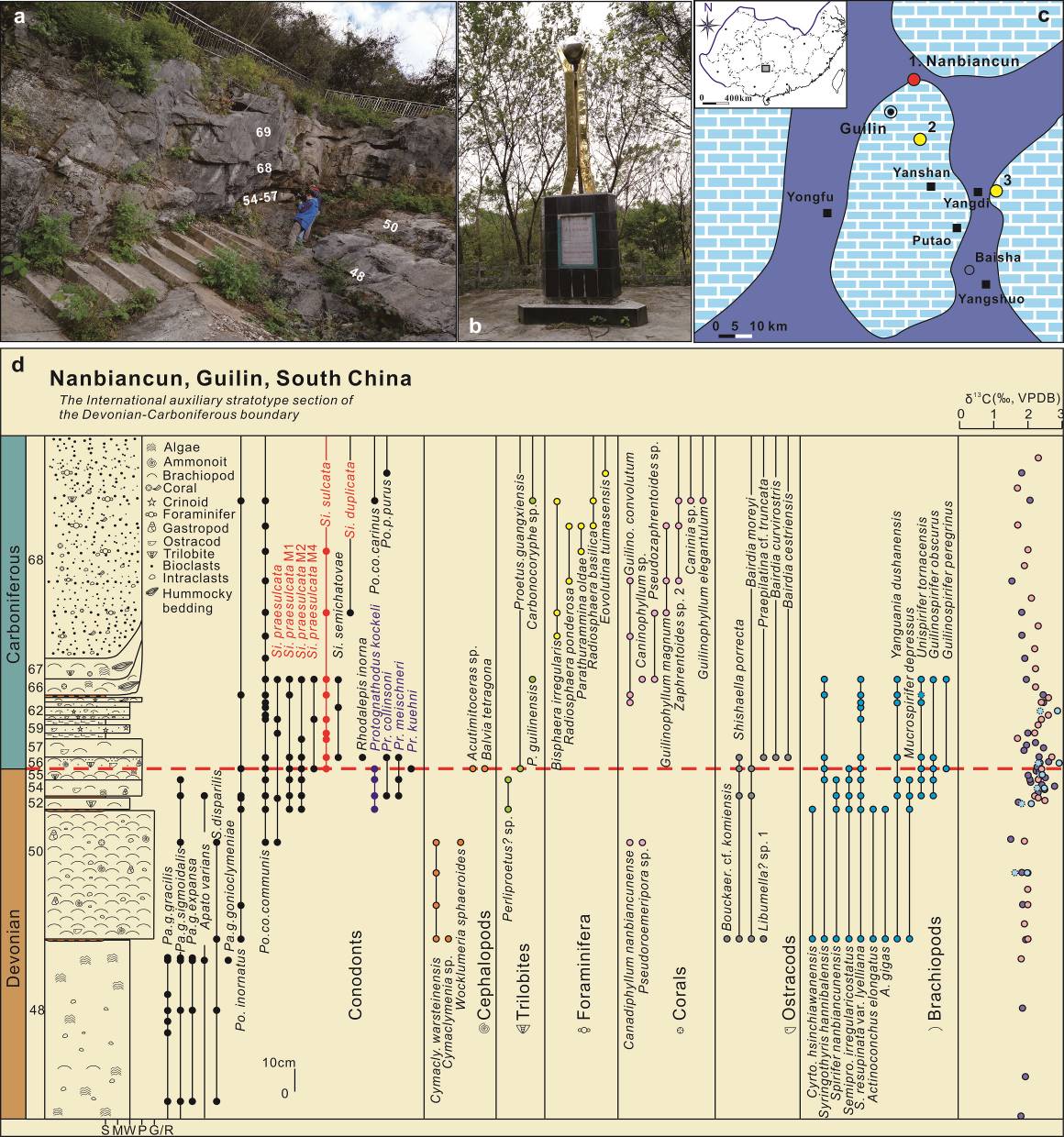
Figure 2. The international auxiliary stratotype section of the Devonian-Carboniferous boundary at Nanbiancun, Guilin, China.

Figure 3. The Muhua II DCB section at Muhua, Changshun, Guizhou.
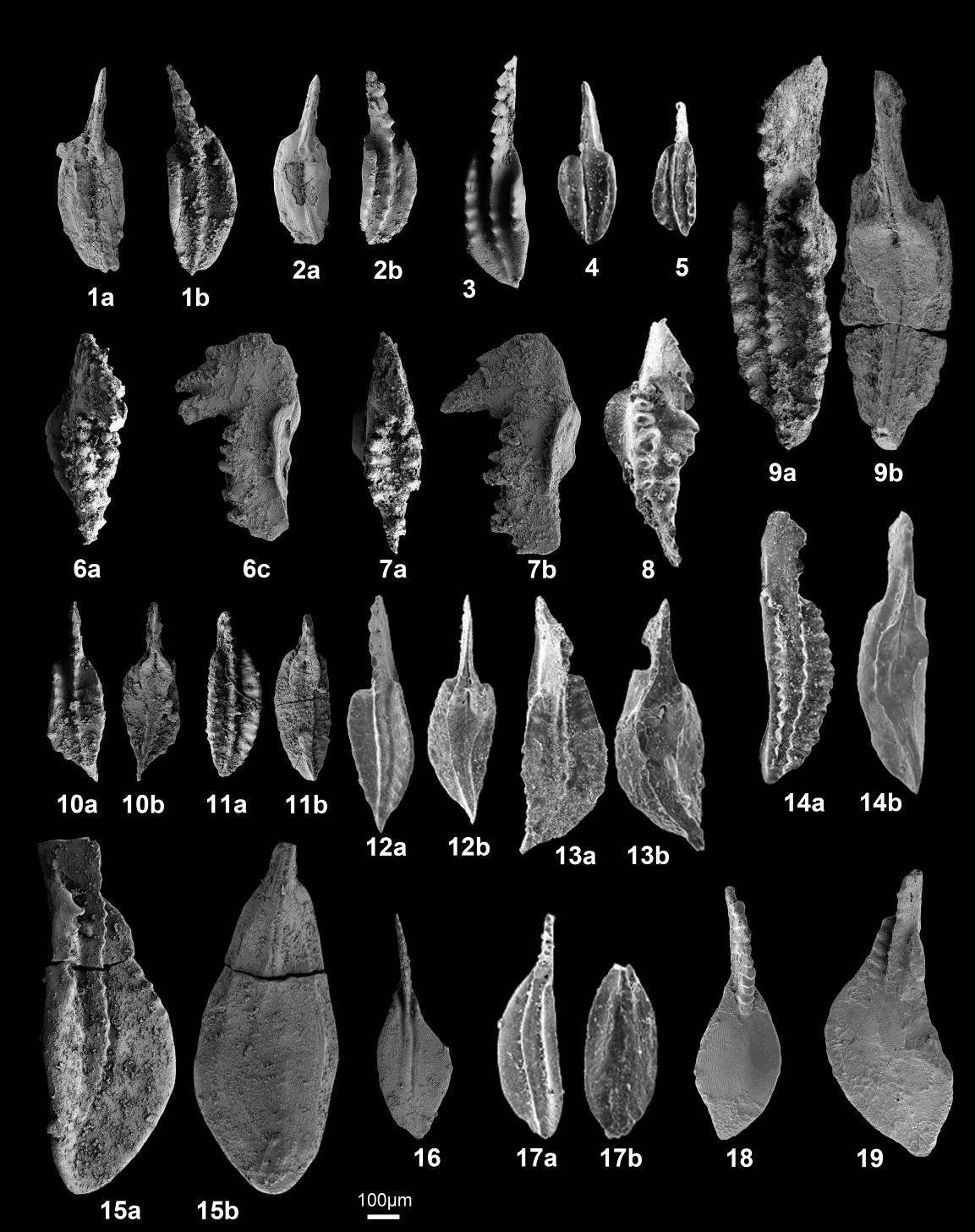
Figure 4. Important shallow-water conodont elements from the DCB intervals in South China characterized by the polygnathid-clydagnathids biofacies of the upper Hangenberg Crisis interval and the endemic siphonodellids biofacies of lower Tournaisian.
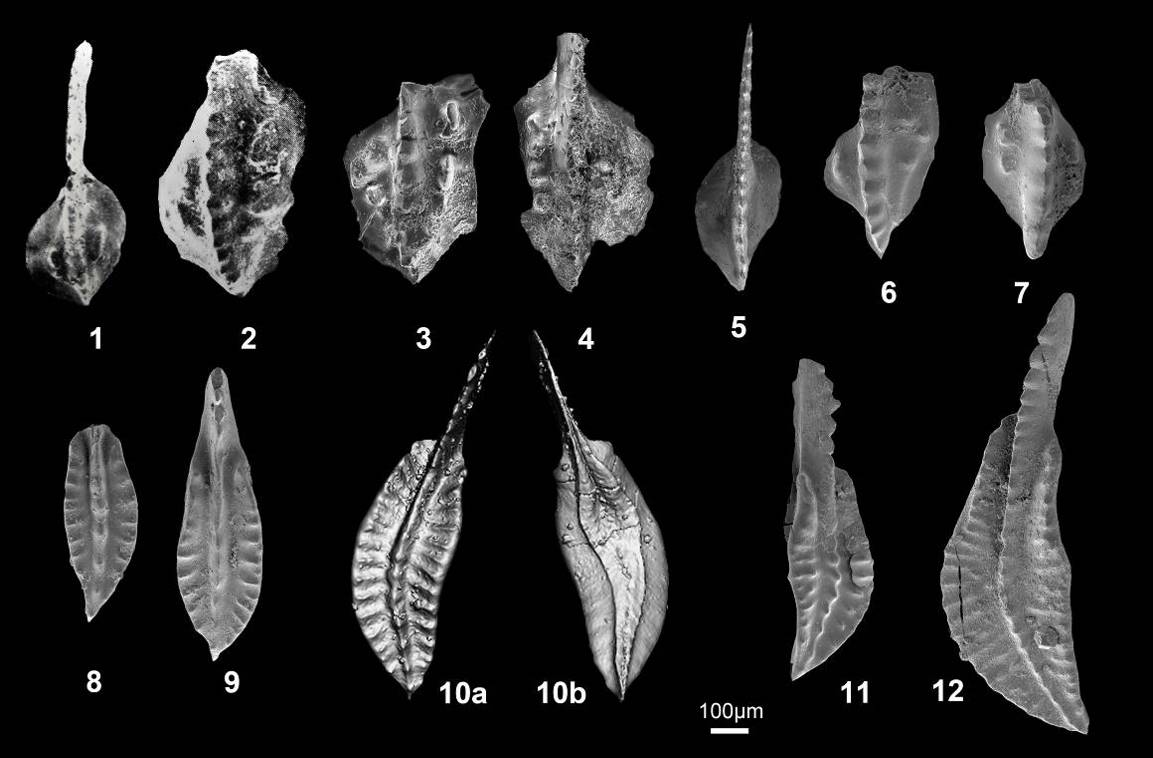
Figure 5. Stratigraphically important deep-water conodont elements from the DCB intervals in Youjiang Basin, South China characterized by the polygnathid-protognathodid biofacies of the upper Hangenberg Crisis interval and the siphonodellids biofacies of lower Tournaisian
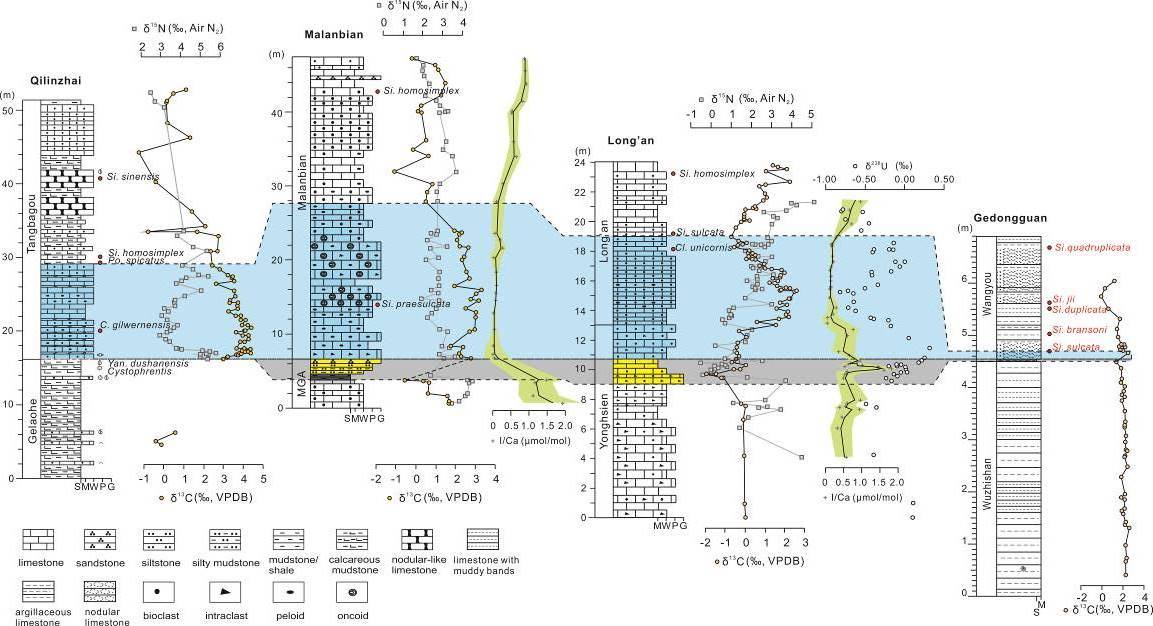
Download:
